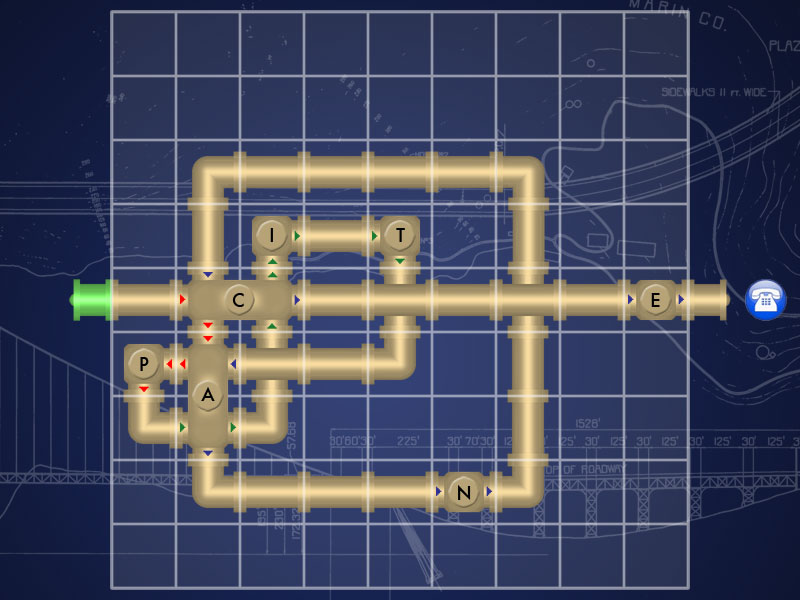Quick Schematic Solution
How It Works
The schematics puzzle re-used the graphics from the pre-game, but with a different set of (hopefully simpler) rules. Each piece contributes a letter to the answer each time it's encountered. Tracing from the input on the left side through all the connections to the output spells out the answer. Each connection is used exactly once. Thus, pieces with two connections (1 in, 1 out) contribute a single letter; pieces with four would contribute two, and pieces with six connections contribute three.
Presentation Slides
The projection of the schematic was run as a presentation that began once the initial actor interaction was completed (themed as, something must be broken - figure out what's wrong to solve the puzzle). The schematic components were presented in order, and the schematic gradually had more information filled in. Color-coded arrows were added to show which outputs were connected to which inputs (red->red, blue->blue, green->green). Ultimately, a "completed" schematic was shown with all arrows in place, and with the piece badges replaced with their assigned letters. At this stage, solving is a matter of tracing through the diagram and recognizing the result as a word.
The completed schematic appeared as follows:

The phone icon was added at the end as final confirmation that, yes, you should call in the answer now.
Solution
The correct path traces from red arrow to red arrow through C, A, and then P. Since the path next returns to the A piece, the arrow color changes to green, where it visits C, I, and T. It then switches to blue as it revisits A, hits N and C, before finally picking up E and exiting. Thus the answer is CAPACITANCE.
GC Notes
With the pre-game solution bonus and the paper handout at check-in time, it was possible to solve this puzzle before the opening presentation had even begun. Since we didn't want teams calling in the answer and dashing off to the next location without watching our actors, we set up the phone system to reject any submissions before we had hit the magic "Start the Game" button.
We phrased the "incorrect answer" phrase carefully to say, "Sorry, that code is currently not recognized", instead of rejecting it outright. Even so, we got several teams complaining to us about the phone system being broken. We took this as an opportunity to play in-character and feign ignorance about this whole "Game" thing.